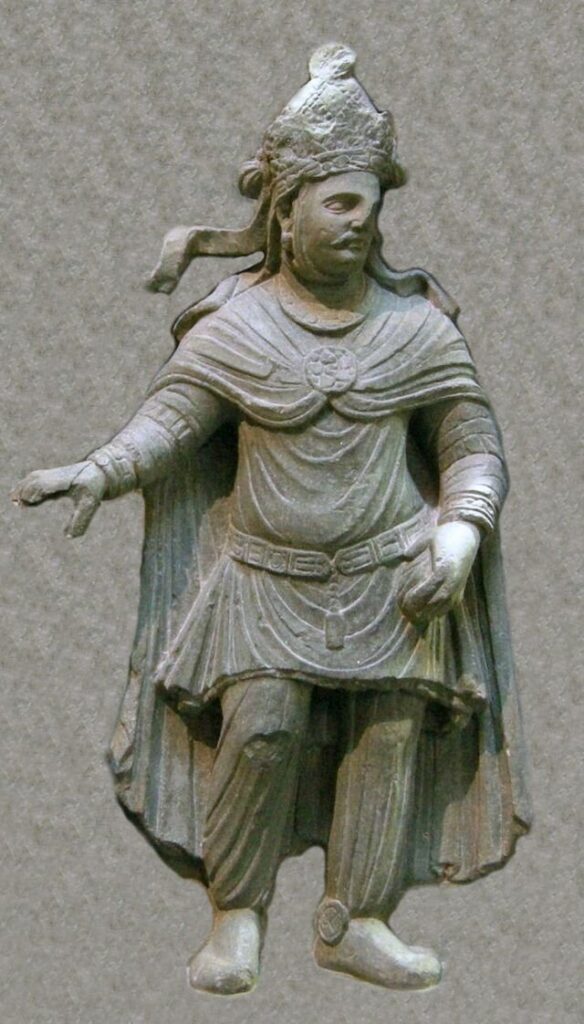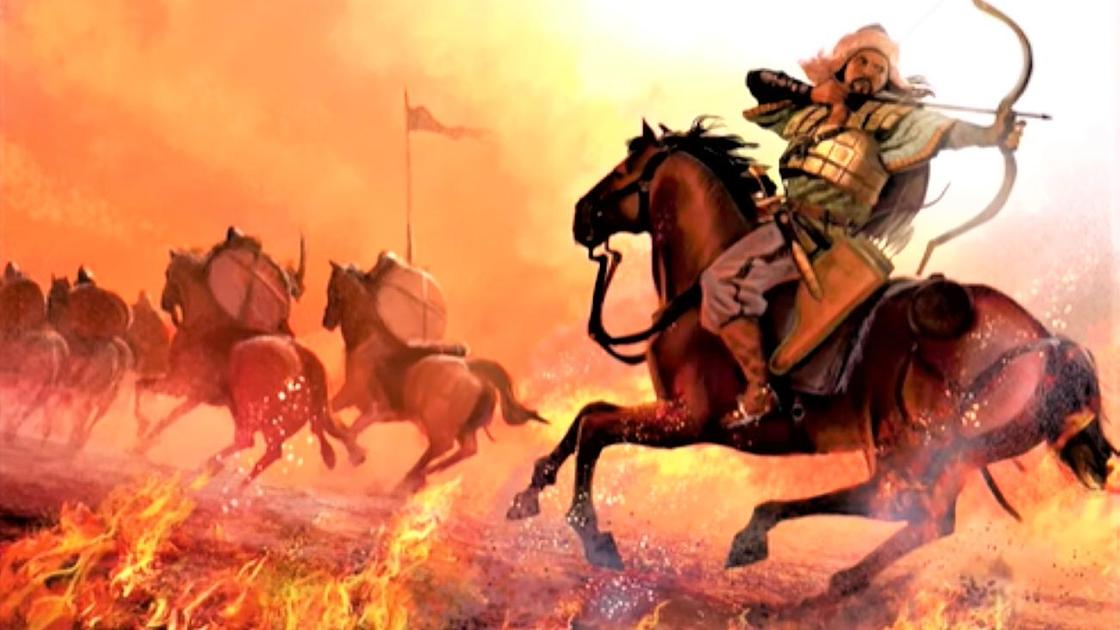Not much information has been preserved about this people. The history of this branch of the Huns is very complicated, and it began at the spurs of the Altai Mountains. In 89 AD the Chinese Han dynasty organized a military campaign against the northern Huns. Then the army of the Chinese commander Dou Xian together with the Southern Huns approached the Northern Chanyu in the Alatai Mountains. Here a great battle took place, during which about 13 thousand Hunnu warriors were killed, and about 200 thousand people from 81 tribes were captured.
This military expedition in 89 AD led to the defeat of the Hunnu state in Central Asia. Subsequently, another Chinese invasion of Hunnu lands was organized in 91 AD, which forced the nomads to seek their salvation in the west. After 93 AD, the northern Hunnu were no longer left in the Altai region.

Map of the location of the Hionite tribes in the 4th century AD.
The Hunnu began a gradual migration towards Central Asia. From this branch of the Hunnu gradually formed a people called the Hionites. Several large groupings of the Khionites formed four main hordes. The northern ones settled beyond the Syr Darya River, the eastern ones settled in the Tien Shan, the western ones in the area of Khiva, and the southern ones moved south of the Amu Darya River.

Kushan king or prince, II or III century AD. Photo from free sources on the Internet.
So far, scientists have not been able to specifically identify the ethnicity of the Chionites. Researchers assume that in the IV century the Huns attacked the Alanian tribes that lived between the rivers Ural and Volga. There was a mixture of two different cultures and a new ethnos was formed. Some historians believe that the word Khion or Xion can be related to the Indian word Khuna. According to another version, the name xion is derived from the word kushana. Other orientalists argue that the Khionites, being originally a Turkic people, mixed with Iranian-speaking peoples in the Central Asian region. The first mention in the history of the Chionites refers to 356 AD.

Painting. Man from Balalyk-Tepe. Presumed work of the Chionites of Chacha. V-VII centuries AD. The photo is in the public domain.
It is known that in 356 AD the Sassanid king Shapur II had to fight back the hostile nomadic tribes of Khionites and Kushans. In the 360s and early 370s Sasanian king Shapur II conducted two wars against the Khionites. The capital of these tribes was located in the city of Balkh. Then the first war was waged by the Chionites and conducted a successful military campaign against the Persians. The Sassanid king himself led the army, but it did not save the Persians. Shapur II himself waged war against the Chionites a second time, hoping to win back, but also failed. In the 370s, the Chionites were able to seize and assert their power in the Central Asian region between the Syr Darya and Amu Darya rivers. The state of the Chionites existed on these lands for about 120 years. In the end, however, Shapur managed to conclude peace with the Chionites by 358.

Coronation of the infant Shapur II. Image from the Shahnameh (Book of Kings). The picture is in the public domain.
The Chionites succeeded in conquering Bactria. Later, they made an alliance with the Persians, and took part in the Roman-Persian War. Under the command of their king Grumbat, the Chionites took an active part in the siege of the frontier city of Amida in 359 on the side of Sassanid Persia.

A Sassanid coin depicting Shapur II. Photo from free Internet sources.
In 437, Sogdiana was also invaded by the Chionites. Then another Sasanian king Yezdigerd II continued the war with these nomadic tribes, but failed to defeat them. Because of the frequent expansion of the Chionites, Yezdigerd II moved his royal residence to the northern borders of the empire.
Later, the position of the Chionites began to deteriorate after the rise of the Kidarite and Ephthalite tribes in the Central Asian region. Archaeological finds indicate that the Chionites subsequently submitted to the Ephthalites. It is known that by 556 the Chionites were finally defeated by the Turks of the Ashina clan. The remaining Chionites were able to unite with the Ugrian peoples and formed a new nation — the Avars.
